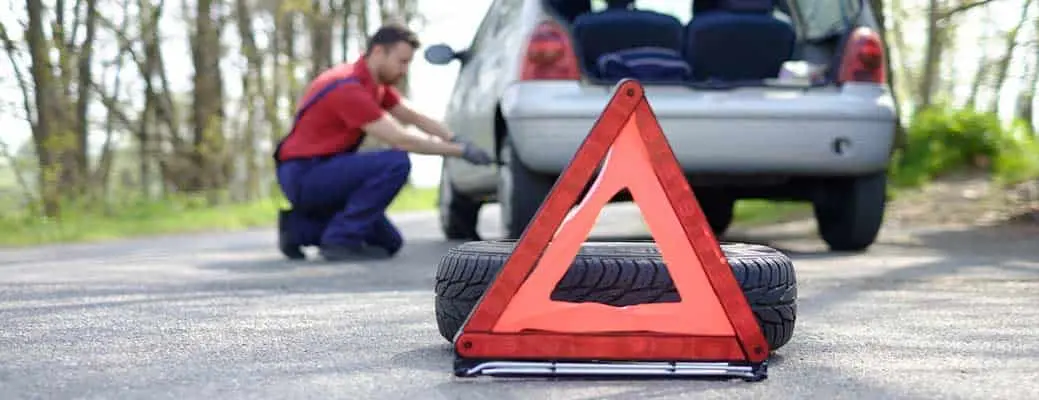How to Handle a Roadside Emergency


A flat tire at home is one thing — a tire blowout on a busy highway is another. More than 14,000 people a year are injured in crashes involving a stopped or disabled vehicle, according to the Insurance Institute for Highway Safety. The key to staying safe during a roadside emergency is being prepared: knowing what to do and having the proper roadside safety supplies. Be prepared for emergencies in different circumstances with this roadside safety advice.
If your car breaks down at night, it’s essential to make your vehicle visible. Turn on your emergency lights and pull off as far from the road as you can. If you have flares or reflectors, set them up, then call roadside assistance or a 24-hour towing company. Always stay in the vehicle and let someone know exactly where you are — even if that means a late-night phone call.
Low visibility during rainstorms is dangerous for both drivers and those stranded. If you need to pull off a slick road, do so slowly and avoid parking in any dips with accumulating water. Stay in your vehicle as much as possible until help arrives. If your car has been in standing water, avoid restarting the engine, which can cause serious damage.
If you’re in the snow, the National Weather Service recommends running your car 10 minutes per hour for heat. Don’t forget to crack a window for fresh air. To be more visible, turn on your interior light and open your hood if the snow has stopped to signal you need help.
At the first sign of trouble, get out of harm’s way — which may mean exiting the freeway or pulling off as far as you can onto the shoulder. Turn on your emergency lights and climb out of the passenger side door. Set up flares if you have them and stand as far away as you can to stay safe. Now, get out your phone. Who should you call when your car breaks down on the highway? The police, roadside assistance and a loved one.
If you anticipate driving through remote areas with spotty service, it’s a good idea to let a friend or family member know beforehand. That way, if you do encounter car trouble while in an isolated area, someone will know if you’ve been delayed. As always, make your car and yourself visible and stay in the vehicle if it’s safe. It will likely take more time for roadside assistance to arrive. Be sure to verify the towing company is who they say they are — ask for the driver’s name on the phone and look for the company’s logo.
Whether you’re on a cross-country road trip or simply commuting, it’s best to be prepared. Include these items in your roadside safety kit, and don’t forget to tailor it to your specific climate.
You’re just one call away from help with Farm Bureau’s 24/7 roadside assistance. If you’re stranded with a flat tire, dead battery or more, call 800-226-6383 and we’ll send help from our trusted professional network.